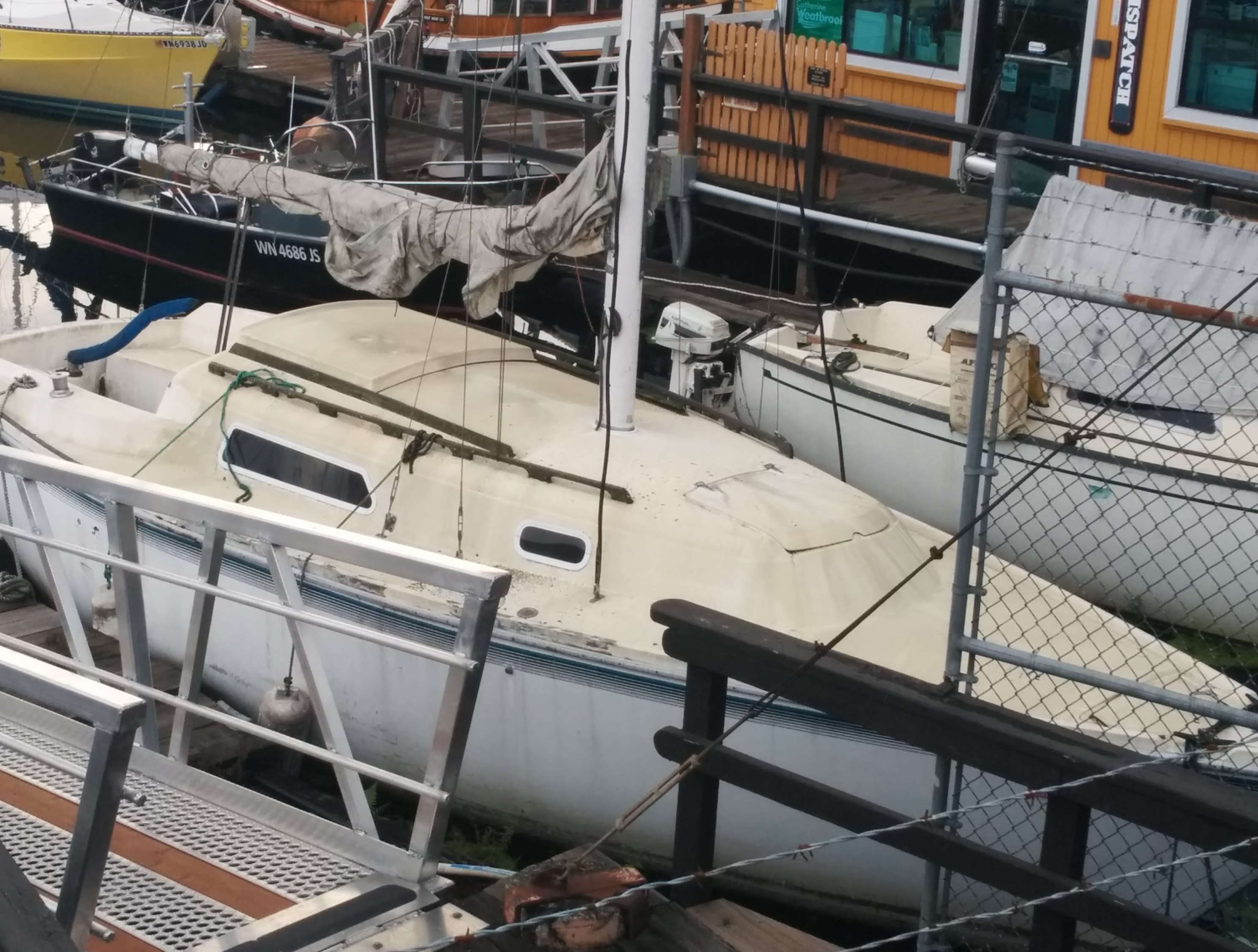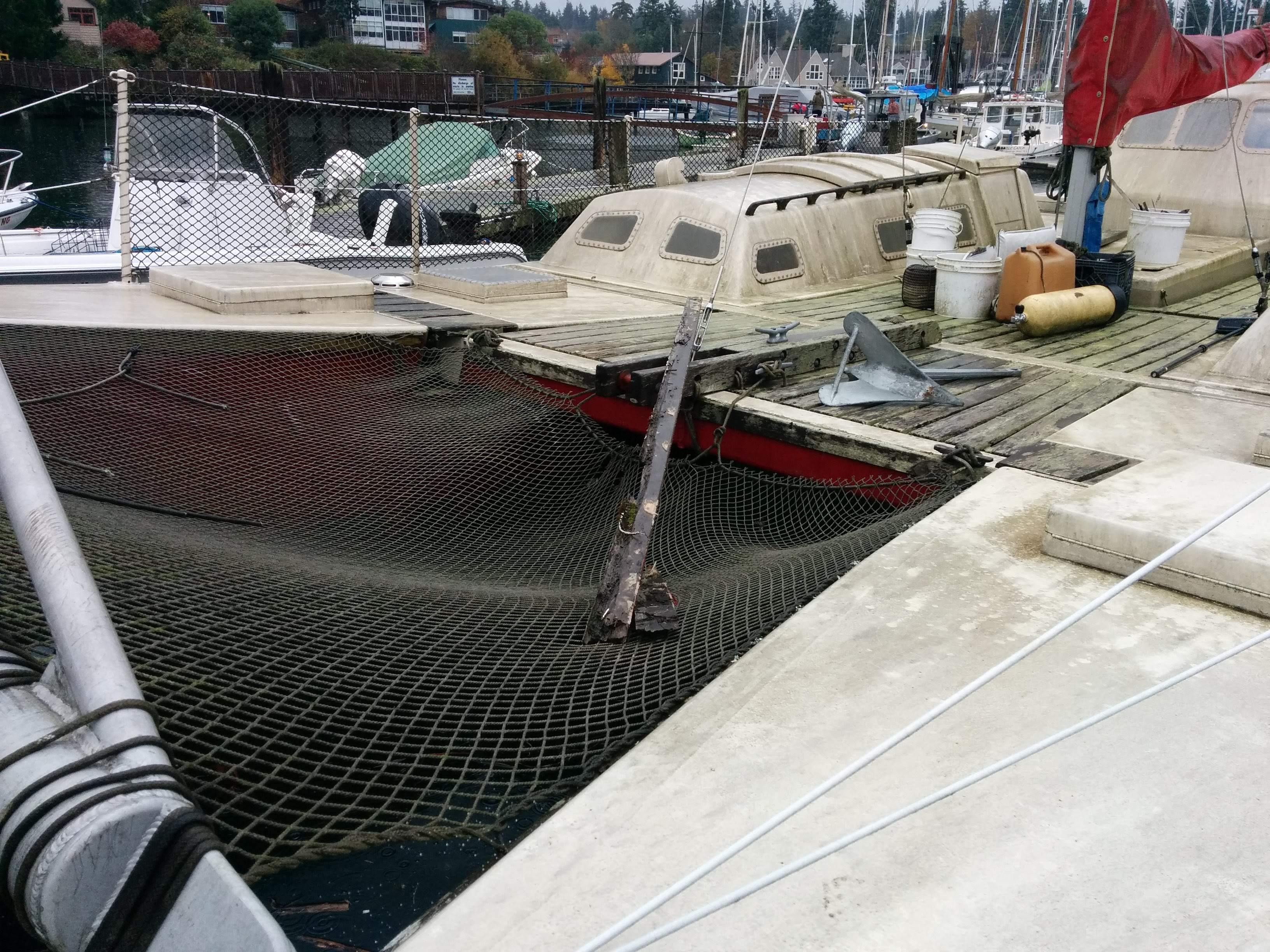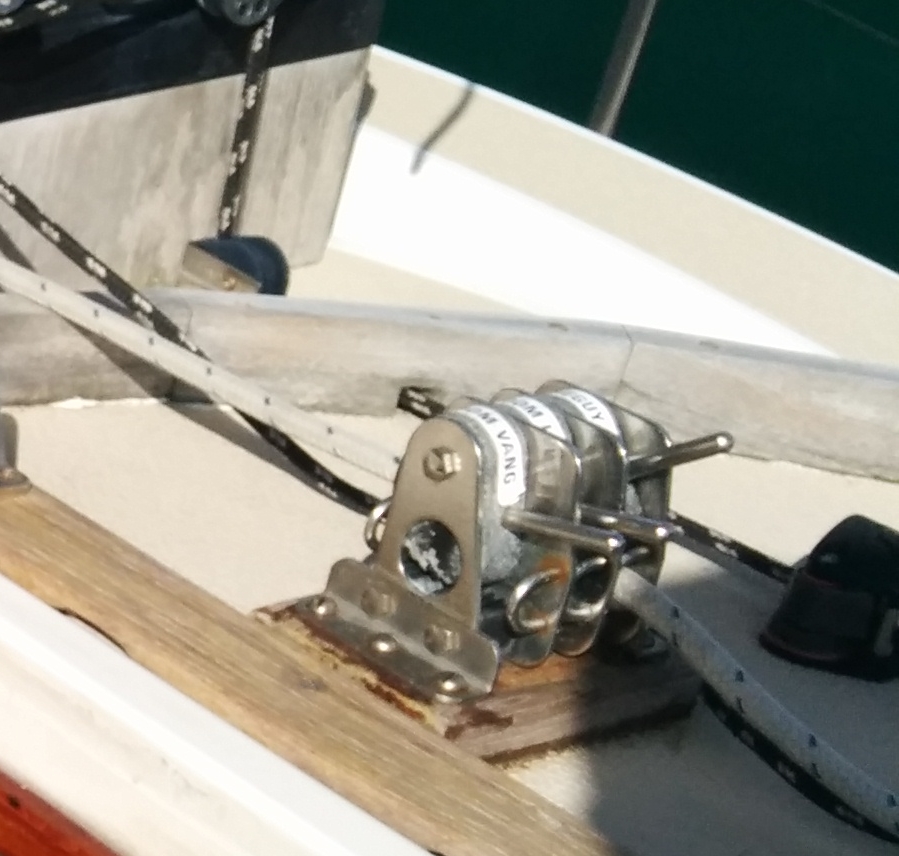“Project boat” is a term boaters use to mean a boat that is a mess – old, neglected, in need of major deferred maintenance and repairs. When I first learned this term I thought it meant a boat that had some major damage like a hull puncture or grounding, or perhaps sat in a boatyard for a few years and was no longer guaranteed seaworthy. When shopping for boats, I knew I definitely didn’t want a project boat.
Later I learned “project boat” means a different thing to everyone. All boats are project boats in a sense – in that there are always projects to do.

To me what “project boat” means is a boat that has so many projects that they interfere with actually using the boat (for sailing or cruising). It could be big projects that require the boat to be hauled out in the boat yard for a long time, or just many small projects that end up consuming all your time or making you not comfortable using the boat yet.
Some people buy project boats because you can get them really cheap, and then spend 2-3 years rebuilding them. Many people succeed, but the Internet is littered with sad stories of others who devoted years restoring project boats and finally gave up before they could finish. Here’s just one example: http://restoringasunkenwestsail32.blogspot.com/

The “Really Big Project” Project Boats
In my early boat buying search, I was led a bit astray in reading Cap’n Fatty Goodlander’s “Buy, Outfit, Sail” book. He’s a fantastically entertaining writer with many great stories to tell – but I think I interpreted his stories a little too black and white.
He tells how he bought a sunken 38’ boat in the 80’s for $3k in salvage rights + $4k for a crane + $3k in repair costs, for a total investment of $10k, ending with a boat worth $50k. I think there was some creative license taken with this story – it’s hard to believe a boat that was holed and sunk was repaired for only $3k, even with all the labor done on your own. A 38’ boat would need to have some electronics to be worth 50k, and electronics don’t hold up so well to salt water submersion. You should also be wary anytime dollar values are quoted from a long time in the past, or in different currencies – 1980’s prices are an apples to oranges comparison to today – $10k in 1989 is $19k in today’s dollars.
Cap’n Fatty writes that the boats you can find a truly great deal on are the ones with a major problem and a ticking clock:
“What is a major problem? No engine. No rig. No rudder. Sunk. Holed. Crushed. Burned. Wobbly keel.”
I thought this defined project boats, but later I realized it’s the extreme – the really rare cases where it’s completely obvious that the purchase cost will be low and the sweat equity (and equipment equity) costs will be high. Far more common are the borderline project boats – the boats you’re a bit unsure about, might be comfortable going for a day sail on, but wouldn’t be really happy with and would quickly have a project list longer than you can work through anytime soon.
How Boats Become Project Boats
It’s sad to see old boats that haven’t been maintained. Boats are not like houses; they require a lot more yearly maintenance and upgrades to stay current and comfortable. Owning a sizable sailboat is such a privilege and relatively rare thing overall that it amazes me there are people who don’t show gratitude for that good fortune by keeping the boat in stellar condition and allowing it to live up to its potential. But life changes and I guess a lot of people get boats when they shouldn’t have – when they should have just chartered or joined a club instead.
A boat that hasn’t been maintained or upgraded in a while has a long list of deferred maintenance – dozens and dozens of projects and hundreds of hours of labor. That’s what makes it a project boat.
Early in my search when I looked at old boats (two 30-year-old Tartan 37s) I thought that all old boats looked like that – that their 1980s rope clutches, crazed hatches, scuffed teak floors, and rotted bulkheads were just standard on a boat of that age. Later I realized they were probably borderline project boats.
How to Tell Whether a Boat is a Project Boat
Here’s a photo of what I call “1980’s hardware”. These are rope clutches for the running rigging. I’ve sailed on dozens of club boats, but I never saw something like this until looking at 1970-80s used boats. Aside from the fact that they may work just fine, they look very rinky dink and not as easy to operate as modern clutches.

Rope clutches aren’t a reason to rule out a boat! But this might be a good indication that everything else on the boat is old too – if rope clutches from the 70s haven’t been upgraded, how much else on the boat hasn’t been upgraded either?
This is what you call a major hack job. Notice the acrylic panel that has been glued / screwed onto the original hatch acrylic (to stop leaks). Also the screws are rusted. It might seem like a quick job to fix this, but if the owner did one hack fix like this, there are probably many other issues equally awful or worse.
Not all old boats look like old boats. I looked at two LF38’s (the model we went with) – an ‘84 and an ‘82. The neglected one felt old, the non-neglected one didn’t. It’s eye opening to look at two boats of the same model and nearly the same age, and see a night and day difference. Sometimes you have to go with your gut instinct – if it doesn’t feel quite right, it probably isn’t.
It’s in all the little details. There might not be any one thing that makes a boat feel old – but a lot of little things can add up to it. And all those little things add up to a longer and longer project list.
One Man’s (or Woman’s) Project Boat is Another Man’s Treasure
As they say, one man’s trash is another man’s treasure; the same can go for boats. What you consider a project boat will differ from someone else. So you have to consider what your standards are – do you live a fancy life with a 4-car garage, new house and central air conditioning? Or are you just as happy living out of a 400 square foot apartment with drafty windows, and drive a beat up 1980’s Civic?
Those are two extremes, but those two people will have very different standards for a comfortable boat. So consider your life on land – the higher your standard of living on land, the higher it’ll probably need to be on a boat as well.
The boat buying process is really hard. I’m glad we’re past that, and am not envious of those having to go through it now. Only you can really decide what you want, but figuring out what you actually want can be a long road.

So true!
My boat is 30 years old this year, but I spend lots of time and money trying to make her appear like a much newer boat. I don’t think I’d have the skills or patience to have a real project boat. I’d rather be sailing!
Great post.
I think that caring for an aged and neglected boat makes more sense when the boat is small. Small boats typically cost less to maintain. Eventually every boat will reach its end of life. Someone needs to step into the role of caretaker or the boat will be wasted.
That being said, I also applaud the attitude of buying to outfit rather than buying to refit. There are boats out there for every temperament.